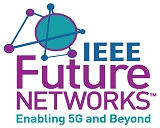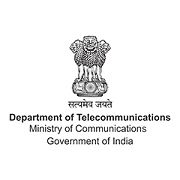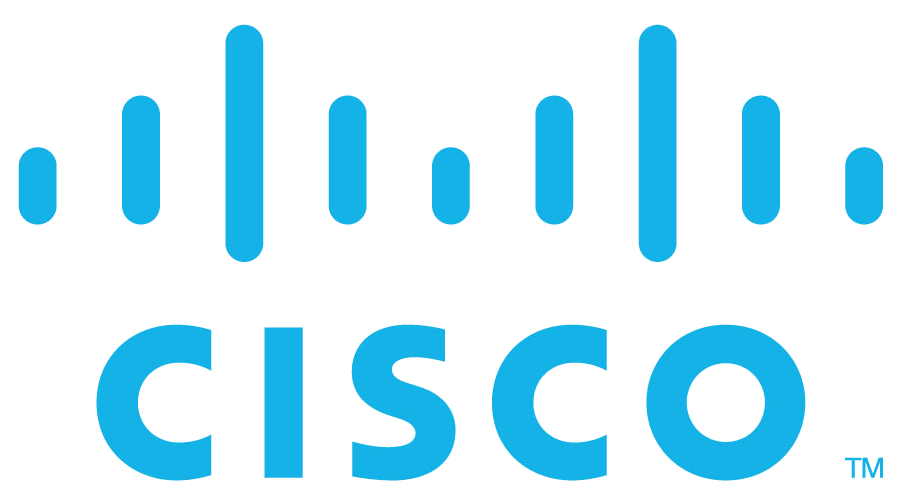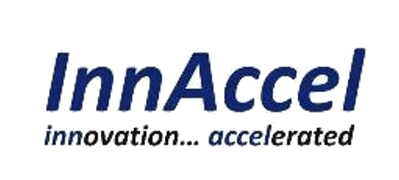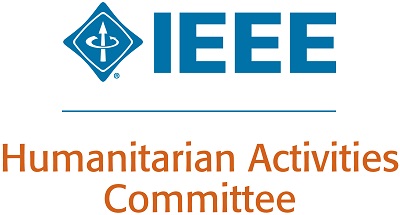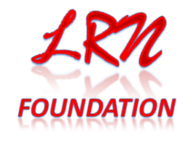Accepted Papers
COMSNETS 2020 paper decisions are out!
Kindly note that the registration for all COMSNETS 2020 papers is mandatory. Even if all the authors of your paper are students you still need to do AT LEAST ONE FULL REGISTRATION. This is as per the guidelines of IEEE and ACM. It is mandatory to register for the paper before uploading the camera ready to EDAS. There will be no exceptions to this policy.
Further, if you are a student author, we encourage you to apply for various travel grants advertised on the conference website.
Camera ready papers are due by November 20, 2019 (HARD DEADLINE). Please adhere to the instructions given on the website in preparing the camera ready manuscript.
- PHY-Based Key Agreement Scheme Using Audio Networking
Dania Qara Bala (Indian Institute of Technology Bombay, India); Bhaskaran Raman (Indian Institute of Technology, Bombay, India) - BH-MAC: An efficient Hybrid MAC Protocol for Vehicular Communication
Saurabh Kumar (Chungbuk National University, Korea); HyungWon Kim (Chungbuk National University & College of Electrical and Computer Engineering, Korea) - SBL-Based Interference Cancellation And Data Recovery For Uplink C-RAN
Anupama Rajoriya and Vidushi Katiyar (Indian Institute of Technology, Kanpur, India); Rohit Budhiraja (IIT Kanpur, India) - Energy Efficient Multi-Pair Massive MIMO Two-Way AF Relaying: A Deep Learning Approach
Venkatesh Tentu, Dheeraj Naidu Amudala, Anupama Rajoriya and Ekant Sharma (Indian Institute of Technology, Kanpur, India); Rohit Budhiraja (IIT Kanpur, India) - Rand-OFDM: A secured Wireless Signal
Hesham Mohammed (University At Albany SUNY, USA); Dola Saha (University at Albany, SUNY, USA) - Scalable and Fair Resource Sharing Among 5G D2D Users and Legacy 4G Users: A Game Theoretic Approach
Sreetama Mukherjee (Jadavpur University, India); Sasthi C. Ghosh (Indian Statistical Institute, India) - DA-TV: Dynamic Adaptive Television Broadcast for Mobile users
Monalisa Ghosh (Indian Institute of Technology, India); Anubhav Choudhary (IIT Kharagpur, India); Chetna Singhal (Indian Institute of Technology Kharagpur, India) - Opinion Control Competition in a Social Network
Mohak Goyal (Indian Institute of Technology Bombay, India); D. Manjunath (IIT Bombay, India) - Copula-Based Cooperative Sensing of OFDM Signals in Cognitive Radios
Akhil Singh (International Institute of Information Technology, Hyderabad, India); Sai Praneeth Chokkarapu (International Institute of Information Technology-Hyderabad, India); Sachin Chaudhari (International Institute of Information Technology, India); Pramod Varshney (Syracuse University, USA) - Practical Server-side Indoor Localization: Tackling Cardinality & Outlier Challenges
Anuradha Ravi and Archan Misra (Singapore Management University, Singapore) - "Please come back later": Benefiting from deferrals in service systems
Anmol Kagrecha and Jayakrishnan Nair (IIT Bombay, India) - End-to-End Delay Jitter in LTE Uplink: Simple Models, Empirical Validation & Applications
Megha Sahu (Indian Institute of Technology Bhilai, India); Arzad Kherani (Indian Institute of Technology, Bhilai, India) - Secrets in Source Code: Reducing False Positives Using Machine Learning
Aakanksha Saha, Sneha Kumar Kasera, Vivek Srikumar and Tamara Denning (University of Utah, USA) - Deep Learning based Prediction Model for Adaptive Video Streaming
Anirban Lekharu (IIT Guwahati, India); K Mouli and Arijit Sur (Indian Institute of Technology Guwahati, India); Arnab Sarkar (Indian Institute of Technology, Guwahati, India) - BER Performance of Full-duplex Two-way Relay System With User Mobility
Tanvi Kaple (VNIT Nagpur, India); Prasanna Raut and Prabhat Kumar Sharma (Visvesvaraya National Institute of Technology, India) - PanOpticon: A Comprehensive Benchmarking Tool for Serverless Applications
Nikhila Somu (Indian Institute of Technology, Bombay); Nilanjan Daw (Indian Institute of Technology, Bombay, India); Umesh Bellur (Indian Institute of Technology Bombay, India); Purushottam Kulkarni (Indian Institute of Technology, Bombay, India) - ARoM: An Adaptive Resource Optimization Model for Mobile IoT Edge
Ramesh Guntha (Amrita Center for Wireless Networks and Applications, Amrita Vishwa Vidyapeetham University, India); Sethuraman N Rao (Amrita Vishwa Vidyapeetham, India); Maneesha Ramesh (Amrita University, India); Maik Benndorf and Thomas Haenselmann (University of Applied Sciences Mittweida, Germany) - A Distributed Learning Simulation Platform for Edge Hierarchies
Alka Bhushan, Aniket Shirke, Govind Lahoti and Umesh Bellur (Indian Institute of Technology Bombay, India) - ROSE: Random Opportunistic and Selective Exploration for Cooperative Edge Swarm of UAVs
Sudip Misra (Indian Institute of Technology-Kharagpur, India); Anandarup Mukherjee (Indian Institute of Technology, Kharagpur, India); Aniq Ur Rahman (National Institute of Technology Durgapur, India); Narendra Singh Raghuwanshi (Indian Institute of Technology Kharagpur, India) - PriVC: Privacy Preserving Verifiable Computation
Hardik Gajera (DA-IICT, India); Manik Lal Das (DAIICT, India) - On Some Universally Good Fractional Repetition Codes
Shreyansh Prajapati, Sourav Deb and Manish Kumar Gupta (Dhirubhai Ambani Institute of Information and Communication Technology, India) - Low PAPR DMRS sequence Design for 5G-NR Uplink
Sibgath Khan and Koteswara rao Gudimitla (Indian Institute of Technology Hyderabad, India); SaiDhiraj Amuru and Kiran Kuchi (IIT Hyderabad, India) - PSO-based Rendezvous Point Selection for Delay Efficient Trajectory Formation for Mobile Sink in Wireless Sensor Networks
Anjula Mehto (Atal Bihari Vajpayee-Indian Institute of Information Technology and Management, Gwalior, India); Shashikala Tapaswi and K K Pattanaik (Indian Institute of Information Technology and Management, India) - VRMap: A Cost and Time aware Remapping of Virtual Data Centres over a Geo-distributed Infrastructure
Anurag Satpathy (National Institute of Technology, Rourkela, India); Manmath Narayan Sahoo, Lipsa Chhotray, Banshidhar Majhi and Ashutosh Mishra (National Institute of Technology Rourkela, India); Sambit Bakshi (National Institute of Technology, Rourkela, India) - CORNET: A Co-Simulation Middleware for Robot Networks
Srikrishna Acharya (Robert Bosch Center for Cyberphysical Systems, India); Bharadwaj Amrutur, Yogesh Simmhan, Aditya Gopalan, Parimal Parag and Himanshu Tyagi (Indian Institute of Science, India) - Cache-Aided Non-Orthogonal Multiple Access Over Fading Channels in Downlink Cellular Networks
Shreshta Mohan, Shreya Morgansgate, Priyadarshini Basker and Sanjeev Gurugopinath (PES University, India); Sami Muhaidat (Khalifa University, United Arab Emirates) - Improving Access to Network Resources in IoT Networks
Kaumudi Singh (Indian Institute of Science, India); T Venkata Prabhakar (IISc, India); Joy Kuri (Indian Institute of Science, India) - Joint Control and Shared Channel Scheduling for Downlink in 3GPP Narrowband-IoT
Pavan Reddy M. and Abhinav Kumar (Indian Institute of Technology Hyderabad, India); Kiran Kuchi (IIT Hyderabad, India) - Semi-supervised Subject Recognition through Pseudo Label Generation in Ubiquitous Sensor Data
Sourish Dhekane, Krishnam Vajra and Dip Sankar Banerjee (Indian Institute of Information Technology Guwahati, India) - Study and Mitigation of Platform Related UWB Ranging Errors
Nour Smaoui, Kyungki Kim and Omprakash Gnawali (University of Houston, USA) - A Decoupling Property in Low-Resolution MIMO-OFDM Systems and its Applications
Narayan Prasad (Futurewei Technologies Inc., USA); Xiao-Feng Qi (Futurewei Technologies, Inc., USA) - Optimal Downlink Scheduling and Power Allocation with Reconfiguration Delay
Gowri Muraleedharan (IIITDM Kancheepuram, India); Vineeth Bala Sukumaran (Indian Institute of Space Science and Technology, Trivandrum, India); Premkumar K. (Indian Institute of Information Technology, Design and Manufacturing Kancheepuram, India) - Behavior Analysis through Routine Cluster Discovery in Ubiquitous Sensor Data
Shivam Tiwari, Manan Sharma, Suchetana Chakraborty and Dip Sankar Banerjee (Indian Institute of Information Technology Guwahati, India) - Removing the PDCCH Bottleneck and Enhancing the Capacity of 4G Massive MIMO Systems
Pavan Reddy M. (Indian Institute of Technology Hyderabad, India); Harish Kumar D (IITH, India); SaiDhiraj Amuru and Kiran Kuchi (IIT Hyderabad, India) - Charge Scheduling in Wireless Rechargeable Sensor Networks Using Mobile Charging Vehicles
Rohit Kumar and Joy Chandra Mukherjee (Indian Institute of Technology Bhubaneswar, India) - CONETSI: On Demand Distributed Network State Information Collection using Opportunistic Exploration for Resource Constrained Networks
Srijith S Nair (Ohio State University, USA); Aadreesh Sahu (Indian Institute of Engineering Science and Technology, Shibpur, USA); Srikanth Mantravadi, Anand Svr and Malati Hegde (Indian Institute of Science, India) - Resource Allocation with Admission Control for GBR and Delay QoS in 5G Network Slices
Tulja Vamshi Kiran Buyakar and Harsh Agarwal (Indian Institute of Technology Hyderabad, India); Bheemarjuna Reddy Tamma (IIT Hyderabad, India); Antony Franklin A (Indian Institute of Technology Hyderabad, India) - An Interoperable ECC based Authentication and Key agreement Scheme for IoT Environment
Asit Sahoo (NIT, Rourkela, India); Shreeya Swagatika Sahoo (Nit, Rourkela, India); Sampa Sahoo (National Institute of Technology Rourkela, India); Bibhudatta Sahoo and Ashok Turuk (National Institute of Technology, Rourkela, India) - Effects of Sensing & Control Errors on Quality of Adaptation in Networked Systems
Kaliappa Ravindran (City University of New York, USA); Arun Adiththan (General Motors & Populus Group, USA) - Finding summaries to obtain event phrases from streaming Microblogs using Word Co-occurrence Network
Muskan Garg (UIET, India); Mukesh Kumar (Panjab University, India) - The Watermark-Securable Subspace of a Linear System Containing a Single Malicious Actuator
Bharadwaj Satchidanandan (Massachusetts Institute of Technology, USA); P R Kumar (Texas A&M University, USA) - Relay Selection in Millimeter Wave D2D Communications Through Obstacle Learning
Subhojit Sarkar and Sasthi C. Ghosh (Indian Statistical Institute, India)



